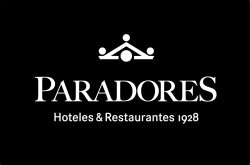Description
Located in the centre of the historic city of Alcalá de Henares, birthplace of the great writer Cervantes, the Parador occupies the site of the 17th century Dominican Collegiate-Convent of Santo Tomás de Aquino and is built around the original courtyard. The recently opened hotel has preserved the original features of the remaining structures and combined these with 21st century installations to create a Parador with a very modern feel.
The Parador’s Hostería del Estudiante restaurant is a very traditional establishment located opposite the hotel in the Colegio Menor de San Jerónimo and which has views of the Patio Trilingüe of the Universidad de Alcalá de Henares. Together they form part of the monumental buildings' collection of the city of Alcalá de Henares, declared a World Heritage Site by UNESCO in 1998. The old building consists of nine suites and the restaurant, function rooms and leisure areas, and the new building houses 120 bedrooms. The Parador also has a seasonal outdoor swimming pool in addition to a fully equipped spa offering a soothing array of treatments.
The Parador has two options for guests to try: the contemporary-styled San Tomás restaurant within the main building which is open daily as well as the original Hostería restaurant which predates the current hotel and still opens from Wednesday through to Sunday. We certainly recommend trying both, and you will enjoy the thoroughly authentic dining experience of the Hostería where guests can sample dishes which remain true to traditional regional gastronomy.
This is a lovely city to stroll around with beautiful architecture to enjoy and a popular terrace culture on warm summer evenings. Easily reachable by taxi from Madrid airport which is 18 miles away.



Add a comment